Historic England has highlighted 17 of its most unusual buildings and places that were granted protection over the past year.
The National Heritage List for England received 256 additions between November 2023 and November 2024 as well as 392 amendments to current listings.
From a Brutalist church to paradise gardens, here is a handful of some of the most surprising items on the government advisor’s list:
Broadmead Baptist Church, Bristol
- Previous
- Next

Source: Historic England Archive
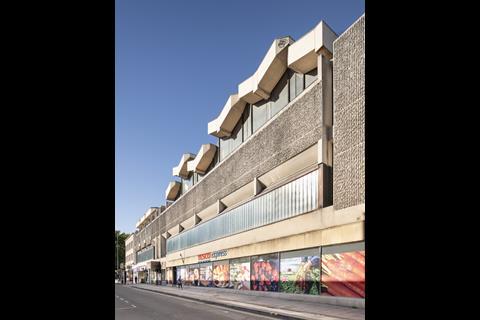





1/7
show captionBroadmead Baptist Church in the heart of Bristol’s Broadmead shopping centre is an example of post-war church architecture. Built between 1967 and 1969 to the Brutalist design of architect Ronald H Sims, it is locally referred to as the “church above the shops”.
Retail on the ground floor provides income for the concrete-clad church facilities above, which internally features a sculptural timber screen known as the ‘Cloud of Witnesses’.
The religious hub was the original base for Baptists in Bristol and the site has been used for worship since the 17th century, with the current church incorporating a collection of plaques and glass from the previous three iterations of the building.
It was designated grade II-listed in August for reasons of architectural interest.
The Mitre Inn, Dudley
- Previous
- Next
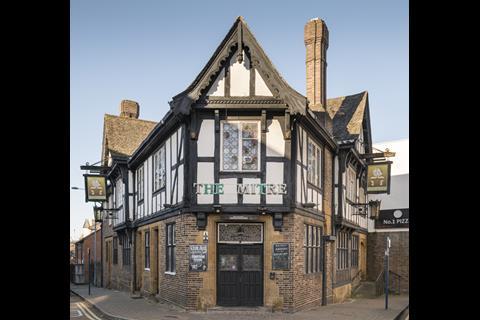
Source: Historic England Archive



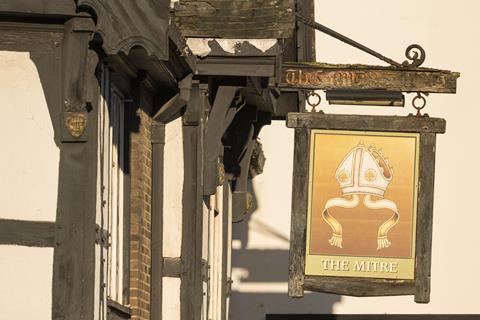
1/5
show captionThe Mitre Inn in Stourbridge was built between 1932 and 1934 to the Tudor revival design of Scott and Clarke Wednesbury, a firm responsible for many Black Country public houses during the inter-war years.
The pub’s exterior has black and white timber beams on the first floor and embellished glass windows. Meanwhile, the building’s interior retains its original fittings, including stained glass, bespoke fireplaces and a decorated ceiling.
This style of pub became known as ‘Brewer’s Tudor’ and marked a shift towards ‘improved’ public houses that were aimed at attracting a growing middle class. This detailed design and history earned the Mitre Inn its grade II-listing in October.
16 Warley Way, Essex
- Previous
- Next
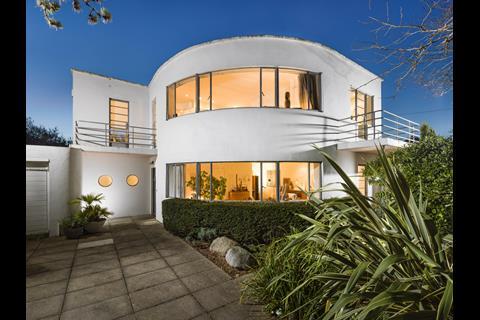
Source: Historic England Archive


1/3
show captionBuilt in 1935 in the International Modern Style, Oliver Hill’s design focused on space and light. The detached house is compact and still has many of its original features, including curved walls, pine block floors and built-in cupboards.
The open plan dwelling was the show-home of a planned seaside resort at Frinton-on-Sea that was never fully realised. Only 40 houses were completed on the 40-acre Frinton Park Estate development, which aimed to introduce modernist architecture to a wider audience. Of the 38 remaining homes, ten were designed by Oliver Hill.
Alterations made to the flat-roofed house in later years such as the removal of the original metal-framed casement windows and tubular steel balcony rails were reversed in the late 20th century.
Architectural and historic interest saw the property grade II-listed in March.
Gardens and pleasure grounds at Brownsea Castle, Dorset
- Previous
- Next
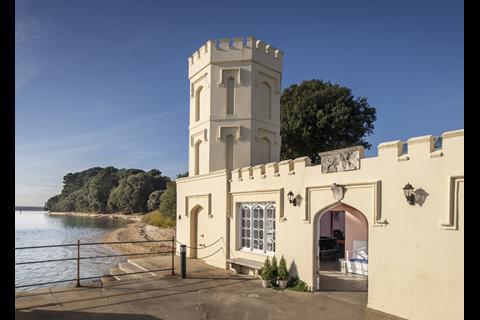
Source: Historic England Archive
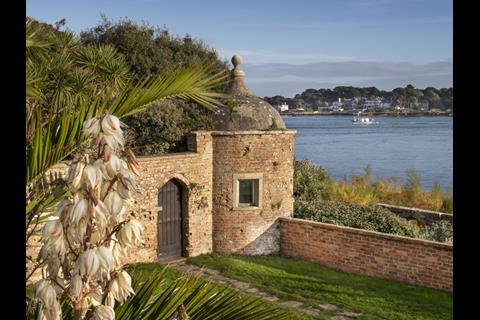


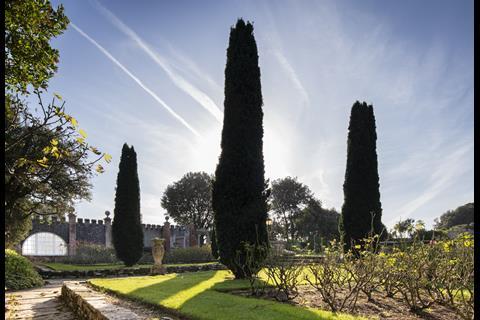

1/6
show captionThe early to mid-18th century garden was originally laid out around Brownsea Castle, a country house built on the ruins of a Tudor blockhouse on Brownsea Island. The landscape started as a small Arcadian pleasure ground and expanded in the 19th century across most of the island. Although a large part of the landscape was damaged by fire in 1934, the green spaces are now home to lakes, specimen trees, a network of walking routes and wildlife, including red squirrels.
The castle’s walled garden is enclosed by historic brick walls and features a central sundial and a circular gazebo, while its terraced garden offers views across the open water.
Brownsea Island hosted Lord Baden-Powell’s experimental scout camp in 1907 and is known as the birthplace of the scouting movement, as well as for its green spaces that reflect the evolution of English garden design.
Wallasey Central Library, Wirral
- Previous
- Next

Source: Historic England Archive



1/4
show captionThe Wallasey Central Library opened in 1911 with the support of prominent education charity the Carnegie Trust. Today, it stands out as one of the best-preserved Carnegie libraries with symmetrical facades in the country.
Its Edwardian Baroque exterior is mostly terracotta-coloured, contrasting the aquamarine tiles along the lower walls and staircase. Meanwhile, the building’s original shelving, radiators and adjustable fresh-air vents are retained inside.
The library became one of the earliest separate children’s libraries in 1915, marking a significant development of children’s library services in the early 20th century. It continues to serve as a children’s community library, following a remodelling to address Second World War bomb damage.
Attached to the former Earlston House, which has been in use as a library since 1899, Wallasey Central Library, including Earlston House, was granted grade II-listed status in November.
Former maternity ward at Princess Royal Community Hospital, Huddersfield
- Previous
- Next

Source: Historic England Archive

Source: Historic England Archive
1/2
show captionThe 1928 single-storey maternity ward was built in response to the 1918 Maternity and Child Welfare Act, which represented an important development in the provision of public healthcare for women.
Designed in the Arts and Crafts style, well-ventilated single-occupancy rooms were chosen over traditional communal wards to raise the standards of infection control and reduce infant mortality.
The ward formed part of the Huddersfield Municipal Maternity Home, established to give expectant mothers improved care. The facility also offered communal pavilion rooms and patios to enhance the wellbeing of recovering mothers post-partum and encourage socialisation.
It spent 56 years as a maternity hospital until the last baby was born there in October 1984. It then became the Princess Royal Community Hospital.
The former maternity ward became grade II-listed in August due to its historical significance and architectural interest, including its relatively unaltered exterior and interior with a good survival of original fittings and fixtures.
Historic England’s 17 most “remarkable” heritage listings for 2024
- Former Maternity Ward, (Block 2), Princess Royal Community Hospital, Huddersfield (Grade II) HD1 4EW
- Broadmead Baptist Church, Union Street and 1 Whippington Court, Bristol, BS1 3HY (Grade II)
- Fingerpost at Toddington, junction of B4077 and Church Lane, Tewkesbury, Gloucestershire, GL54 5DQ (Grade II)
- Tomb of Mary Ellis, 5 metres south of the south porch of the Church of St Clements, Leigh-on-Sea, Essex, SS9 1AR (Grade II)
- Tomb of William Goodlad, in the churchyard of St Clement’s Church, Leigh-on-Sea, Essex, SS9 1AR (Grade II)
- Tomb of Mary Anna Haddock, in the churchyard of St Clement’s Church, Leigh-on-Sea, Essex, SS9 1AR (Grade II)
- Electricity Junction Box on Fitzwilliam Street, Huddersfield, HD1 5AY (Grade II)
- Cromford Mills, Derwent Valley World Heritage Site, Derbyshire DE4 3RQ (List amednment at Grade I)
- Browndown First World War Practice Trenches, Gosport (part of a wider list entry) (scheduled monument)
- The Mitre Inn, Lower High Street, Stourbridge, Dudley, DY8 1TS (Grade II)
- Gardens and pleasure grounds at Brownsea Castle, Brownsea Island, Poole Harbour, Dorset, BH13 7EE (Grade II park and garden)
- Wallasey Central Library, including former Earlston House, Earlston Road, Wallasey, CH45 5DX (Grade II)
- 16 Warley Way, Frinton-On-Sea, Essex Co13 9pa (Grade II)
- Ashby Walled Garden, Heath Road, Ashby de la Launde, Lincoln, Lincolnshire, LN4 3BT (Grade II)
- Inglis Portable Military Bridge (light type) over the Basingstoke Canal, Hampshire GU11 2HJ (Grade II)
- Wonersh United Reformed Church, Wonersh Common, Wonersh, Guildford, GU5 0PJ Surrey (Grade II)
- Church of St Mary and lychgate, Church Lane, Crossway Green, Worcestershire, DY13 9SQ (Grade II)

